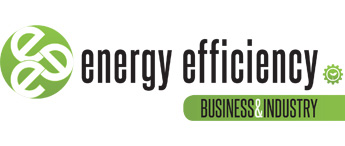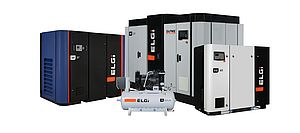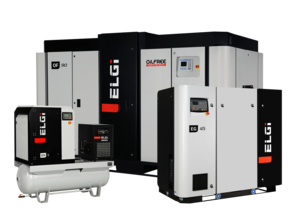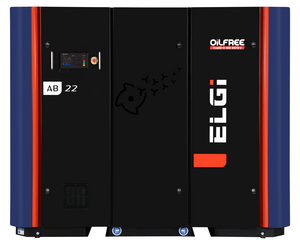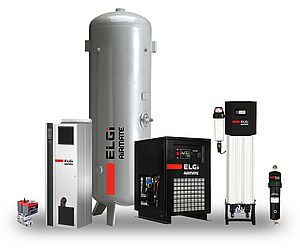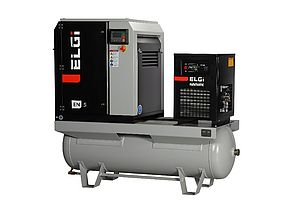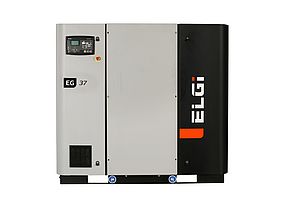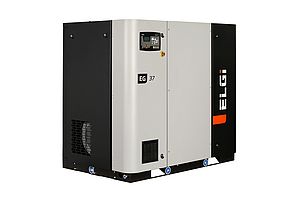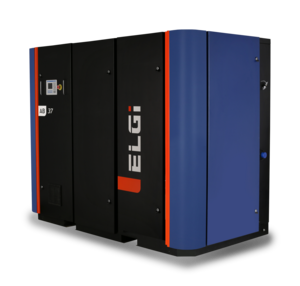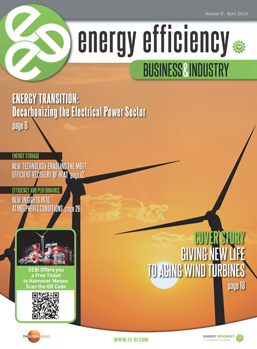It is not a revelation to anyone in the industry that energy is the largest operating expense, accounting for the majority of utility costs. In manufacturing processes using compressed air, air compressors consume approximately 12% of the total electrical energy, and over the lifespan of an air compressor, 80% of the cost is energy use, and 20% is the cost of the unit including maintenance.
Energy consumption reduction targets across the European to be achieved by 2030. The revised EU Energy Efficiency Directive (EU) 2023/1791, published in September 2023, will accelerate energy efficiency across the European Union, requiring EU countries to collectively reduce their energy consumption by 11.7% by 2030, relative to the 2020 reference scenario. Additionally, EU countries will have to achieve new annual savings of on average 1.49% of total energy consumption from 2024 to 2030 (https://energy.ec.europa.eu/news/new-energy-efficiency-directive-published-2023-09-20_en).
Embracing energy efficiency practices is much more than compliance. It is also the right thing to do. Decarbonisation of heavy industrial processes is central to reaching targets combatting climate change. With industry being the third-largest carbon contributor after energy production and transport, energy efficiency measures in industrial processes have enormous decarbonisation potential.
This article examines ways to consume less energy, produce more, and bring lasting benefits in terms of sustainability, profitability, and effectiveness to your compressed air applications.
An informed, holistic view – Air Audit
Whether you’re considering a new air compressor or planning to upgrade the existing system, working closely with a subject matter expert capable to design or redesign your compressed air systems, one that could then remain as your service provider, is critical. This will ensure you get the true picture of all areas that need to be addressed when aiming at improving the energy efficiency of your operations.
Your expert partner would conduct a compressed air system energy audit, or Air Audit to identify areas of loss or inefficiencies within a compressed air system. Moreover, skilled energy audit engineers can then identify and modify faults and disorders.
A complete analysis looks at everything from the compressor to the environment in which it operates, as well as operational demands such as peaks and troughs in air demand and operational expansion planning. A finite analysis of the bigger picture - understanding how even the most minor system elements impact the energy consumption associated with the compressor.
The aim is to strike the right balance in technical and economic choices - in compressor units, capacities, operational parameters, energy efficiency, planning for future air demand changes, and considering all energy costs.
A proper Audit Report details recommendations on short-, medium-, and long-term measures for energy conservation, along with financial estimates and analysis for their implementation. These recommendations come with databases and fact sheets generated by measurements and tests conducted in your plant and the field. After this study, manufacturers can propose making educated decisions about their assets, upgrade investments, and ultimately achieve a reduced compressed air energy consumption.
Sizing the air compressor and selecting the right technology
With so many air compressor technologies in the market today, the right selection for your production can be overwhelming. When choosing an air compressor, assessing the load type is critical. For example, a screw air compressor doesn't shut down immediately and goes into unload state to limit too many motor starts and stops. This unloading process consumes up to 30% of energy, increasing the company's operating costs. When selecting the unit for your facility, duty cycle, operating pressure, and airflow demand should be some of the key considerations.
Different industries like pharmaceuticals, automotive, food and beverage, etc. are powered by various pneumatic applications that demand a specific airflow (m³/min). Selecting a suitable compressed air system is crucial to ensure that the air compressor meets the airflow and pressure demands of the pneumatic applications while ensuring optimal performance and energy consumption.
The duty cycle, referring to the operation cycle or the time the compressor runs to provide compressed air at a consistent pressure and specific flow rate, is one of the critical parameters that help decide if a fixed speed drive or a variable frequency drive (VFD) is required. Manufacturers can choose from a wide range of air compressors equipped with or without a VFD based on the variation in airflow demand.
In the case of a fixed-speed air compressor, the compressor runs at the same rate, consuming the fixed power for the air demand. The electrical motor runs at the maximum constant speed irrespective of the compressed air requirement. On the other hand, the air compressor with variable frequency drive can automatically adjust the speed between its minimum and maximum range, ensuring that the compressed air generation matches the compressed air demand and subsequently consumes significantly less energy at low demand. The VFD air compressor greatly benefits industries and applications with largely varying airflow demands. However, it’s not a given that a VFD compressor is the better technology in all cases. It’s important to look at the size of the air receiver that provides a certain buffer capacity. This air receiver will ultimately handle smaller flow fluctuations and therefore will be very beneficial to avoid too frequent starts of the compressors, and even help VFD compressors as too fast of air demands will lead to quick pressure drops which the VFD cannot cope with. Therefore, there is a good consideration to be done when auditing and changing eventually the system after an audit.
When pressure drops
Selection of the right compressor can be a daunting challenge with several technologies and options available in the market. Looking at the quality of air requirements, the capacity of the compressor, duty cycle, and utilisation together with your compressed air partner will help you choose the right solution. Whether it’s reciprocating and screw compressors, VFD, or Fixed Speed technology, one of the other factors to look at is the overall design of the system and reduction of pressure drops – the reduction in air pressure from the compressor discharge point to the application point of usage.
High-pressure drop in the distribution system and the hoses, pipes, and joints results in lower operating pressure to the user and thus results in additional pressure generation and a significant increase in energy consumption.
The most typical areas where “Pressure drop” occurs include the pressure vessel, aftercooler, air treatment equipment like dryers, filters, check valves, and the piping system itself. For every additional 1 bar increase in discharge pressure, there will be an additional energy consumption of approximately 7 percent of the full load power. Additional generation of pressure will also lead to additional storage capacity and increase the cost of equipment.
Pressure drop upstream of the compressors created by the inlet air filter system results in higher power consumption. A pressure drop downstream will induce the need to select a compressor system that generates a higher pressure. Air pressure optimisation, and minimising differentials in all parts of the system are important criteria for efficient operation and saving energy.
If a certain side application requires a much higher or lower pressure, it is advisable to use a separate compressed air system for that pressure rather than expanding or boosting the compressed air from the central system in a factory. The ROI of a separate system will be economical compared to the overall energy savings that the plant would generate by optimising pressure requirements.
Choosing the right components in a compressed air system
Compressed air contains inherent impurities that are detrimental to the end application. Some common contaminants of compressed air are water, dirt, small wear particles, bacteria, and sometimes even degraded lubricating oil. For increased reliability and energy savings, compressed air must be clean and dry. Choosing the right product from a wide range of pneumatic downstream and upstream accessories can make the air friendly to the environment, end-use, and your pocket:
- Moisture and water vapour precipitate as condensate when compressed air cools down following a compression process. Dryers eliminate and remove this condensate from the compressed air system to prevent damage to downstream equipment.
- In the case of oil-lubricated screw compressors, the process of compressing air results in the formation of condensate, a mix of water, oil, and dust particles. To avoid polluting the groundwater, it is necessary to treat the condensate before disposal into the wastewater system. An Oil Water Separator can be easily integrated into any installation and removes oil in the condensate through a multi-level separation process with both efficient, absorbent fibre and activated carbon, only using gravitational energy.
- Atmospheric air contains moisture, particle contaminants, microorganisms, and gases. When it is compressed, the concentration of these elements increases by 6 to 10 times. When it is compressed by an air compressor, oil, and metal traces get added during the compression process. Reliable filtration solutions remove contaminants from the compressed air providing assurance of purity before it is used for any application. The filter element enables high contaminant removal with low-pressure drop, also resulting in energy savings.
- Heat Recovery Systems (HRS) enable to recover up to 78% of the heat generated during the process of an oil-injected air compression and are available for operations of all sizes. This heat can be used to heat water, which can be useful in the production process, boiler feed, or for domestic water usage. A high return on investment brings immediate cost savings and more importantly, saved energy contributes to carbon emission reductions and helps you in lowering the company’s net carbon footprint.
- Zero loss drain valves remove the condensate formed in the production of compressed air, which gets collected in dryers, after-coolers, and air receivers and may cause rust or damage in the system. Automatic Drain Valves are designed to fit directly on the equipment and sense the level of condensate to prevent compressed air losses in the system.
There is a plethora of elements, products, and solutions to consider when looking at improving the energy efficiency of your systems. Partnering with the experts in compressed air for a detailed examination of your system and finding the right balance in technical and economic choices to protect yourself against rising energy costs and more stringent energy efficiency regulations will pay off in an increasingly shorter timeframe these days.
Author: Niccolò Casini, product manager ELGi Compressors Europe
